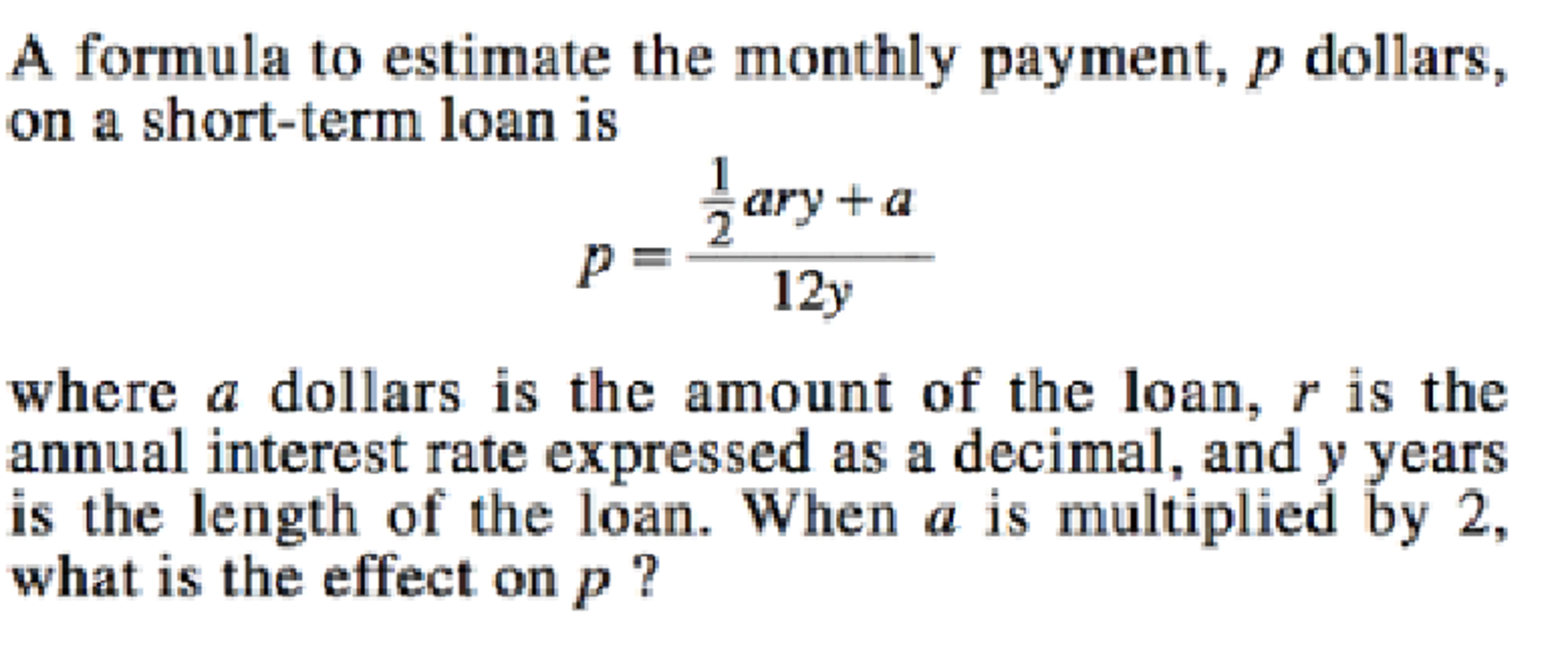An algebra problem by Engin Akpinar
Algebra
Level
2

p is multiplied by 2
p is divided by 2
p is multiplied by 4
p is multiplied by 6
p does not change
This section requires Javascript.
You are seeing this because something didn't load right. We suggest you, (a) try
refreshing the page, (b) enabling javascript if it is disabled on your browser and,
finally, (c)
loading the
non-javascript version of this page
. We're sorry about the hassle.
The simplest way to solve this problem (and the key way to avoid making mistakes with the algebra) is to simply plug in your own numbers for a, r and y. If we keep it simple, let us say that the loan amount a is 100 dollars, the interest rate r is 0.1, and the length of the loan is 2 years. Now we can find our initial p.
p = . 5 a r y + a 1 2 y
p = . 5 ( 1 0 0 ) ( 0 . 1 ) ( 2 ) + 1 0 0 1 2 ( 2 )
p = 1 1 0 2 4
p = 4 . 5 8
Now if we leave everything else intact, but double our loan amount (a value), we get:
p = . 5 a r y + a 1 2 y p = . 5 ( 2 0 0 ) ( 0 . 1 ) ( 2 ) + 2 0 0 1 2 ( 2 )
p = 2 2 0 2 4
p = 9 . 1 6
When we doubled our a value, our p value also doubled.
Our final answer is,p is multiplied by 2